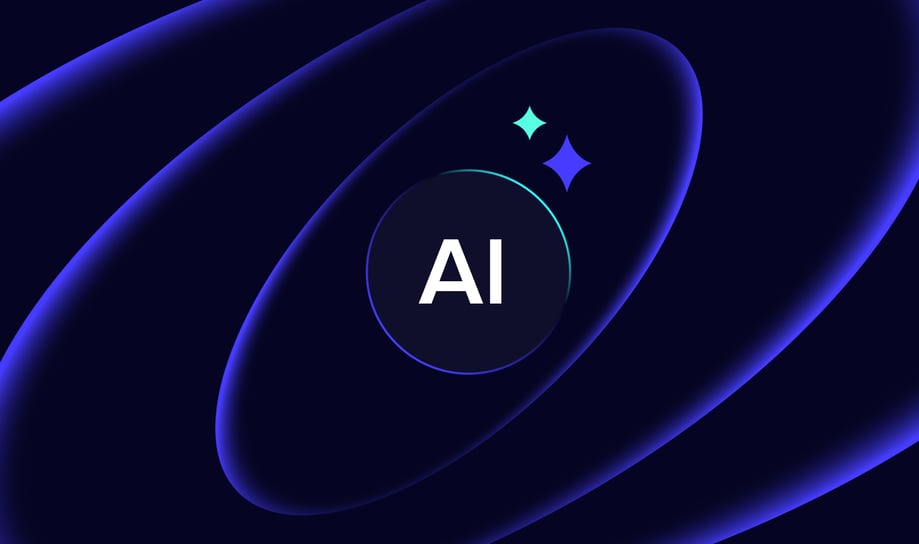If you want to scale your business, you need to establish your grounds in the global market. However, one major hindrance that companies face when expanding is the language barrier.
This is exactly why automated translation is revolutionary. It makes communication accessible to international employees and customers alike. With the recent growth in artificial intelligence (AI) and machine learning, translation tools have become faster and more accurate, making global expansion accessible to businesses of all sizes.
In this article, we will explain what automated language translation is, and how it works. We will then highlight the best practices to follow when implementing it in your workflow, as well as some of the key use cases.
Let’s get started!
What is Automated Language Translation?
Automated language translation means converting text or speech from one language into another using technology. This technology is engineered to use different algorithms, neural networks, and large datasets to understand and translate the provided text.
Modern translation tools can produce real-time contextual translations across multiple languages, which makes them an essential asset for businesses, international organizations, and even everyday users.
Unlike human translation, which is more resource-heavy and slow, automated tools can handle large volumes of text quickly and at a fraction of the cost without overburdening localization teams.

How Does Automated Translation Work?
Before we proceed, it is important to have some insight into how automated translation works.
Automated translation uses a combination of AI, machine learning, and natural language processing (NLP) for the task. The goal here is to decode the meaning, intent, and context of the source text and re-encode it accurately in the target language.
Here’s a detailed breakdown of the process:
Data Collection and Timing
Automated translation tools rely on vast datasets of bilingual text to understand the relationships between words and phrases and their translations. This data is used to train the models, helping them understand the structure, grammar, and syntax of various languages.
For example, Transifex's proprietary AI technology leverages Translation Memory (TM), a database of previously translated segments, which means the system learns from your approved translations over time.
At this point, we should also mention that data privacy is incremental for this process. With Transifex’s Zero Data Retention (ZDR) feature, your data is never shared or used in public models, addressing privacy concerns and complying with regulations such as GDPR, CCPA, and LGPD.
Neural Machine Translation (NMT)
NMT is the most advanced form of automated translation. It uses deep learning techniques to build models that process entire sentences rather than going word-by-word. This is necessary for more natural and contextually accurate translations.
NMT models continuously learn and improve by analyzing new data, which helps them adapt to evolving language trends and nuances.
Contextual Understanding
Using NLP, automated translation tools can grasp the context of words within sentences. This ensures that all ambiguous terms or phrases are accurately translated. This involves understanding grammar, word order, intent, and the specific use case of translations so the meaning remains intact.
Post-Editing Capabilities
Many automated translation tools also offer post-editing options where human translators can refine machine-generated results. This collaborative approach combines the speed of automation with the precision of human translators, resulting in the highest quality localized content.
8 Best Practices for Automated Translations
While AI translation tools are a savior both cost and quality-wise, you still need to strategically plan to make the most of it.
Here are eight best practices that can really help you achieve best results with automated translation:
Define Your Goals
Before you start a project, make sure to establish clear goals. For example, ask yourself if you only want to provide a basic understanding of your content or if you are hoping to produce a polished, publication-ready translation.
Another thing to be mindful of is the type of project you are working on. You need to know the specific requirements to select the right translation tools and decide whether to hire human translators to proofread and edit the AI-generated results.
For instance, a legal document may demand higher accuracy and cultural sensitivity, while a quick translation of internal emails might only require a basic understanding.
Clear goals help you set expectations, determine timelines, and allocate resources more effectively.
Choose the Right Translation Tool
Free online translation tools might suffice for casual use, but professional projects demand specialized solutions like translation management systems (TMS).
A robust TMS like Transifex offers features specifically designed for localization, including AI translation, translation memory, terminology management, quality assurance tools, and integrations with content repositories and tools in your tech stack. These features ensure consistency, accuracy, and scalability for your global content.
Evaluate TMS options based on language support, integration capabilities, accuracy, and data compliance to find the best fit for your needs.
Leverage Glossaries and Style Guides
Consistency in terminology is critical, especially for businesses that work across multiple markets.
A glossary is a collection of standard translations for specific terms, often tailored to a company’s brand or industry. Using a glossary helps automated translation tools maintain uniformity in the translation of key terms, ensuring that terms like product names, slogans, and technical jargon remain consistent.
Style guides also complement glossaries by specifying preferences for tone, formality, and style. For example, a style guide may define whether to use formal or casual language when addressing customers.
Don't have these resources ready? Transifex AI automatically generates them for you based on your brand's profile, audience, and context.
Implementing these tools ensures that the translated content aligns with your brand’s voice and maintains clarity for the end user.
Utilize Human Post-Editing
Even the most advanced translation tools can make errors, especially when dealing with idiomatic expressions, cultural references, or industry-specific nuances. Human post-editing serves as an additional layer of quality control.
After generating an automated translation, a human translator reviews and adjusts the content to ensure that it accurately conveys the original message. This is particularly useful for high-impact content or user interfaces where the tone and emotional resonance are critical.
Transifex’s Quality Index (TQI) provides an automated real-time assessment of translation quality, highlighting areas that require human post-editing and helping you eliminate unnecessary touch-points for translations that are ready to be published.
Train the Model with Your Data
Many automated translation tools, particularly those using neural machine translation (NMT), allow for custom training.
This means you can feed the tool with specific documents, such as user manuals, technical reports, or marketing copy, that reflect the type of content your organization frequently translates.
It helps the model learn the appropriate vocabulary, phrases, and context unique to your field.
Monitor Translation Quality Regularly
Translation quality can vary depending on software updates, changes in language trends, or shifts in your own content needs. Regularly monitoring the quality of translations ensures that the tool continues to meet your standards.
This can be done through internal reviews, user feedback, and quality metrics like fluency, accuracy, and consistency. Platforms like Transifex can streamline this process with dedicated progress reports and real-time insights into your team's performance, all in one intuitive dashboard.
Incorporate Feedback Mechanisms
Building a feedback loop into your translation process can significantly enhance accuracy over time. By allowing users or clients to rate or comment on the quality of translations, you can gather valuable insights into which aspects of the translation need improvement.
This feedback can be used to update glossaries, refine translation models, and adjust style guides. Additionally, involving a team of linguists or language experts to review and provide feedback can help identify subtle language errors that automated systems might miss.
Stay Updated with Software Updates
Translation software developers frequently release updates to improve accuracy, add new languages, or integrate better user interfaces.
Staying up-to-date with these changes ensures that you benefit from the latest advancements in machine learning and AI, which can lead to more accurate and faster translations.
5 Use Cases for Automated Translations
Automated translation has a wide range of applications across different industries. Here are five key use cases:
E-commerce Localization
E-commerce platforms use automated translation to localize their websites, making product descriptions, reviews, and customer support available in multiple languages. This helps businesses reach new markets and improve customer satisfaction by providing a personalized shopping experience.
Simply connect your translation tool with the e-commerce platform of your choice to streamline the localization workflow and ensure a seamless experience for international shoppers.
Customer Support
Many companies use automated translation tools to offer multilingual support to their global customer base. This allows customer service representatives to communicate effectively with users who speak different languages, reducing response times and improving the overall customer experience.
For example, Transifex reduces response times and improves the quality of customer interactions globally through features like Zendesk and Freshdesk integrations.
Content Management Systems (CMS)
For organizations that produce large volumes of content, such as blogs, news sites, and knowledge bases, automated translation helps ensure content is accessible to a wider audience. Integrating translation tools with CMS platforms enables seamless localization and publishing.
Transifex provides powerful integrations with leading CMS platforms such as WordPress, Drupal, and Contentful, including the Transifex Native SDK. These integrations automate localization workflows directly within your CMS, ensuring that your content is consistently translated and readily accessible to a global audience.
Software
Automated translation is an essential tool for SaaS companies looking to localize their applications or user interfaces. By translating the software's UI, help documentation, and error messages, developers can provide a seamless user experience across different languages and regions.
Transifex is purpose-built for software localization, offering specialized features to address the unique challenges of this domain. Support for a wide range of file formats (like .strings, .json, .resx, and more), robust terminology management, and collaborative workflows facilitate the accurate and efficient translation of user interfaces, documentation, and in-app content. Transifex also supports continuous and agile localization, enabling you to integrate localization seamlessly into your development sprints and release cycles.
Healthcare and Medical Research
Automated translation can assist in translating medical documents, research papers, and patient information across languages. This is particularly useful for sharing research findings globally and ensuring that critical medical information is accessible to diverse populations.
Social Media and Digital Marketing
Brands leverage automated translation to expand their social media presence and digital marketing efforts into new regions. Translate your marketing materials, website content, social media posts, and online advertising to resonate with different cultures.
For website localization, consider specialized automation tools like Transifex Live that enable real-time in-context translation and rapid deployment of multilingual content.

Transifex: Automated Translation Tailored to Your Brand
Fify-five percent of global consumers only buy products from websites that provide information in their native language. Seeing how essential translation is for business growth, you must be searching for a high-quality, budget-friendly translation tool.
Well, look no more!
Transifex is a powerful automated translation platform that eliminates human intervention in localization with intelligent workflows tailored to your brand and project. If you want to scale your business, Transifex with its AI-powered algorithm really is the one comprehensive software you must have.
With Transifex, your business can have:
- 7x faster roll-out and enhanced productivity
- 60% less manual touchpoints
- 45% more localized content on the same budget
Join industry leaders like Hubspot and Vodafone and scale your ROI up to 5x. So, don’t wait up - book a demo now!
Frequently Asked Questions
What is the automated translation process?
The automated translation process involves using AI-driven tools to translate text from one language to another. It typically involves data collection, model training, translation generation, and, in some cases, human post-editing to refine the results.
What is the best automatic translator?
Several tools excel in different areas of automated translation. The choice depends on the specific needs of the user, such as accuracy, language support, and integration capabilities. We recommend Transifex as it is the best option you can go for to manage multilingual content on a budget.



